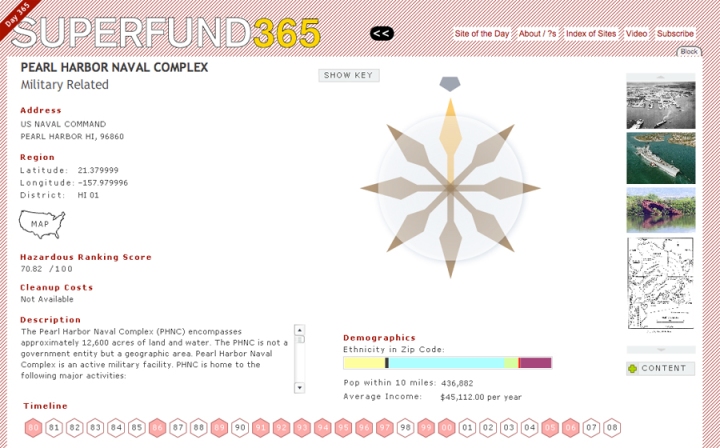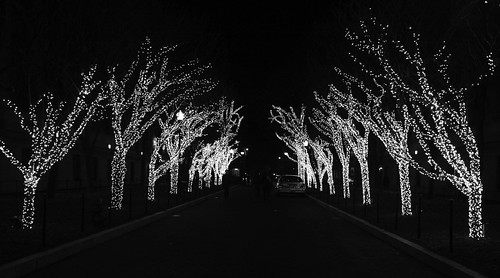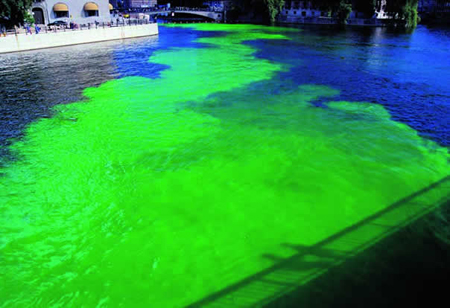Dehlia's Columbia Journey Seminars
Friday, April 22, 2011
Monday, March 7, 2011
Can you get a Ph.D. in Physics for an interpretive dance?
Did you think I was kidding about doing an interpretive dance for the GEC project? No, not at all. Check out the contestants for the third annual competition for Physics, Chemistry, Biology and Social Sciences Ph.D. candidates to transform their dissertation research into a dance performance - sponsored by the American Association for the Advancement of Science (AAAS)! Watch them all on YouTube and judge for yourself - fool or genius? Prizes will be awarded this week.
Wednesday, March 2, 2011
CJS #3: Presenting Your Project
Presentation Deadlines:
- 10 Minute Verbal Presentation to the CJS Group: 3/24
- Wiki Page Final Report: 4/8
- Poster Presentation Forum: TBA
- Introduction
- Materials and Methods
- Results
- Conclusions
General questions to keep in mind as you develop your presentation strategy:
- What kind of background information do you need to provide in order to capture the reader or viewer's interest?
- What is your objective for the project?
- How did you conduct the project? What methods and materials did you use?
- What kind of data did you collect (whether qualitative or quantitative)?
- How can you present your data in a form that is clear and easy to understand?
- Check out InformationIsBeautiful.net for some amazing approaches to data visualization.
- Translating from one way of thinking into another - e.g. from numerical to visual or visual to audible form can reveal hidden connections. Click here for an overview.
- What conclusions did you draw upon completion of the project? What did you accomplish? What remains to be done to address your particular topic?
- Does your project raise more questions than it answers? (That's not a bad thing.) What are some of the questions you have upon completion of the project?
Tuesday, February 1, 2011
No more shooting the breeze...
Warming World 1880-2010 (NASA)
If a picture is worth a thousand words, a video is worth a million data points. Scientist -turned- film-maker Randy Olsend has some great practical advice and strong opinions about how - and why - to communicate scientific knowledge. For a how to guide and much more, check out his blog: The Benshi and read a recent interview with him: Can Video Move the Public on Climate?
If a picture is worth a thousand words, a video is worth a million data points. Scientist -turned- film-maker Randy Olsend has some great practical advice and strong opinions about how - and why - to communicate scientific knowledge. For a how to guide and much more, check out his blog: The Benshi and read a recent interview with him: Can Video Move the Public on Climate?
Tuesday, January 11, 2011
INSPIRATION: What could you grow in your dorm room window?
Ever wish you had some fresh herbs to season the cafeteria food with? How about some flowers to cheer up those institutional walls? Desperate for some green between the concrete New Yorkers are letting plants climb the walls! Check out The Window Farms Project for more info and some DIY tips on how to put those old soda bottles to use.
Thursday, December 2, 2010
Final Fall Semester CJS
- Meet at the Tree Lighting Ceremony, 6PM @ Sundial, before proceeding to the Broadway Lounge
- Present GEC Research Proposals
- Reflect on first semester - courses, lectures, CUSP
- Discuss plans for the winter break - GEC readings, planning for spring and summer projects.
- Return CUSP Reflection/Evaluation
Sunday, November 21, 2010
INSPIRATION: Artist John Hawke does some work on Urbran Infrastructure
 |
| John Hawke, Bus Stop (2005) |
Artist John Hawke noticed that this Brooklyn Bus Stop really needed a bench and a shelter from the weather - so he went ahead and built one! Looking like a standard construction site and complete with a sign in elaborate, nonsense legalese, it went unnoticed by the city for over two months and was enjoyed by local residents.
GEC Research Proposal OUTLINE
The GEC Research Proposal is due by the last meeting of the CJS on Thursday Dec. 2. It should include the following contents and pretty much follow this form. It will be posted on the blog on each group's individual page (look to the right).
General Topic (from Grand Challenges for Engineering): Specific Topic
Introduction: overview of the general and (more importantly) the specific topic that you will investigate, including some background information on the site/technique/problem your group is researching, an explanation of why your particular topic is important, and a brief discussion of some of the other issues that your topic is connected to (e.g. providing access to clean water to drink is connected with questions about land use, water treatment, infrastructure, energy, etc.). The challenging is to contextualize your specific question without losing focus, and to motivate the project. This section should be approximately 500 words or about 2 double spaced pages - the longest part of the research proposal.
The research plan must include the following elements:
A Place to Visit: you'll need to provide a link to the place (if available) and a brief (approx. 100 words) description of what's there that you're interested in. This might be the site that you'll conduct your project (for example a clean-up operation or survey), or a place that you'll conduct research to learn more about the subject (for example a museum or research facility)
A Person to Interview: provide a brief introduction and suggest some of the questions you'd like to ask him or her, and a website if available. (approx. 100 words)
Two (2) Academic Sources: These are two sources that everyone in the group will read over the winter break, and they'll form the basis of a collective approach to the project that you'll devise in the spring; these should be academic books, articles or reports directly related to your specific topic. Briefly describe the content of each (approx. 50 words) (this means you'll have to read a little bit of it now, to make sure its going to be a useful source). I highly recommend having at least one member of the group make an appointment with a research librarian for help in locating good sources. You can do that here: Ask a Librarian
Additional Materials and Sources (Recommended but not required): Many projects are the subject of current news articles, blog debates, current research projects, artworks, films, youtube videos, work by community organizations, etc.... In addition to academic research on the topic, these sources provide crucial background information and may end up being central to your project, so I suggest collecting them up as you find them by posting comments to the blog. For the GEC proposal, include a handful (3-5) of links or citations that you've found useful or interesting.
Looking Forward: the next step, in the spring, will be to devise a project in which you do something concrete related to the topic you've begun to research. Some groups have already come up with approaches to the practical side of their topics, others are focused on research now - but every group should include a brief discussion of how they envision the project going forward. This is a place to brainstorm project ideas, questions and concerns.
General Topic (from Grand Challenges for Engineering): Specific Topic
Introduction: overview of the general and (more importantly) the specific topic that you will investigate, including some background information on the site/technique/problem your group is researching, an explanation of why your particular topic is important, and a brief discussion of some of the other issues that your topic is connected to (e.g. providing access to clean water to drink is connected with questions about land use, water treatment, infrastructure, energy, etc.). The challenging is to contextualize your specific question without losing focus, and to motivate the project. This section should be approximately 500 words or about 2 double spaced pages - the longest part of the research proposal.
The research plan must include the following elements:
A Place to Visit: you'll need to provide a link to the place (if available) and a brief (approx. 100 words) description of what's there that you're interested in. This might be the site that you'll conduct your project (for example a clean-up operation or survey), or a place that you'll conduct research to learn more about the subject (for example a museum or research facility)
A Person to Interview: provide a brief introduction and suggest some of the questions you'd like to ask him or her, and a website if available. (approx. 100 words)
Two (2) Academic Sources: These are two sources that everyone in the group will read over the winter break, and they'll form the basis of a collective approach to the project that you'll devise in the spring; these should be academic books, articles or reports directly related to your specific topic. Briefly describe the content of each (approx. 50 words) (this means you'll have to read a little bit of it now, to make sure its going to be a useful source). I highly recommend having at least one member of the group make an appointment with a research librarian for help in locating good sources. You can do that here: Ask a Librarian
Additional Materials and Sources (Recommended but not required): Many projects are the subject of current news articles, blog debates, current research projects, artworks, films, youtube videos, work by community organizations, etc.... In addition to academic research on the topic, these sources provide crucial background information and may end up being central to your project, so I suggest collecting them up as you find them by posting comments to the blog. For the GEC proposal, include a handful (3-5) of links or citations that you've found useful or interesting.
Looking Forward: the next step, in the spring, will be to devise a project in which you do something concrete related to the topic you've begun to research. Some groups have already come up with approaches to the practical side of their topics, others are focused on research now - but every group should include a brief discussion of how they envision the project going forward. This is a place to brainstorm project ideas, questions and concerns.
Group 6: Carbon Trees
 |
| Artist's Rendering of 'Synthetic Trees' |
This is an outline of the technology from Columbia's Earth Institute: University Joins 'Synthetic Tree' Venture
Persons of particular interest include:
Lackner and his team are developing a device they have dubbed an air extractor, modeled after one of the most abundant but most complicated devices in nature: the leaf of a tree. Leaves are significant absorbers of carbon dioxide from the atmosphere, but planting enough of trees to absorb the current overabundance of carbon dioxide in the world would leave no fertile land left for other uses.
Professor Ah-Hyung (Alissa) Park
The specific on-going research efforts of Park's group include the fundamental studies of novel organic-inorganic hybrid nanomaterials for application in CO2 capture and storage, tailored synthesis of engineered carbon-neutral filler materials and production of hydrogen and liquid fuels from biomass and solid municipal wastes with integrated carbon sequestration.
The specific on-going research efforts of Park's group include the fundamental studies of novel organic-inorganic hybrid nanomaterials for application in CO2 capture and storage, tailored synthesis of engineered carbon-neutral filler materials and production of hydrogen and liquid fuels from biomass and solid municipal wastes with integrated carbon sequestration.
Group 5: Ubran Infrastructure: New York City's Public Transportation System
How is the New York City subway and bus system financed? Why has the price of a subway ride increased dramatically in the last ten years? Does the city's transportation infrastructure meet the needs of its riders, and how could it be improved? Rui, Hannah, George and Darron will research the history of the MTA and explore alternative schemes for pricing rides. Click here to read their research proposal.
Group 4: Urban Infrastructure: The Columbia Expansion Plan
How will Columbia University's Manhattanville expansion plan reconfigure the local community - socially, economically, architecturally and politically? What is the impact of gentrification on the availability of affordable housing within the city and the immediate community of the university? Abby Mitchell, Shadrack Kioi, Cristina Sorrento will examine Columbia's plans and the community responses to them. Click here to read their research proposal.
Group 3: Engineering Better Medicines, Engineering Better Babies?
Does engineering better medicines mean engineering better babies? Andre, Andrea, Joel, and Dagmawi will investigate the eugenic implications of screening for BRAC1 and BRAC2, genes that raise the risk of developing breast cancer, and for "gay genes," should such genes or genetic markers ever be identified. What medical promise does genetic medicine hold? What kinds of ethical and political problems are raised by the collection of genetic data? Click here to read their full research proposal.
Group 2: The NYC Watershed: the Promises and Perils of Gas Drilling
What will become of New York City's surprisingly clean and delicious drinking water if plans proceed to extract natural gas from the rich reserves of the Marcellus Shale? Christina Reveles, Yong Bin, Wangari, Onella will investigate this pressing issue and consider the importance of access to clean water as well as competing interests in greener, domestic energy resources. To read their research proposal click here.
This issues is also the subject of an exhibition that opened this week at Exit Art, a gallery in midtown:
Click here to attend an evening of presentations and debate about how artists contribute to the discussion about hydrofracking (Wednesday, January 12, 2011 / 7-9pm).
This issues is also the subject of an exhibition that opened this week at Exit Art, a gallery in midtown:
FRACKING: Art and Activism Against the Drill
Thursday, November 11, 2010
Group 1: Alligators of Newtown Creek
NEXT MEETING: 10AM Friday November 19th, Carman Basement Lounge
Newtown Creek, Long Island City, Queens NY (birthplace of your GSM)
Resources:
What's wrong with this river?!
Artist Olafur Eliasson drew attention to ideas about the natural environment and water pollution with this work, Green River (1998-200). Intrigued? Read an interview with the artist.
Wednesday, November 10, 2010
GEC Groups
Group 1: Edwin Mathieu, Bavi Sadayappan, Kebe, Feride Eralp
Group 2: Christina Reveles, Yong Bin Kim, Wangari Munjay, Onella Cooray
Group 2: Christina Reveles, Yong Bin Kim, Wangari Munjay, Onella Cooray
Group 3: Andrea Bagarin, Andre Cheng, Joel Camacho, Degmawi Gebre Yntiso
Group 4: Cristina Sorrento, Abby Mitchell, Shad Kiratu
Group 5: Rui Yu, Hannah Keiler, George Zhao, Darron KinneyGroup 6: Daniel Negulescu, Dobri Debrev, Charlie Starr
CJS Meeting #4: November 11, 2010
Agenda
- Visit to the Rare Book and Manuscript Room (6th Floor East, Butler Library)
- Updates on Bob O'Mealley Forum, Independent Research Seminars, upcoming lectures and events
- Distribute second reflection assignment
- Discuss progress on the Grand Engineering Challenges, prepare to submit the research proposal at the final CJS meeting
Subscribe to:
Posts (Atom)











